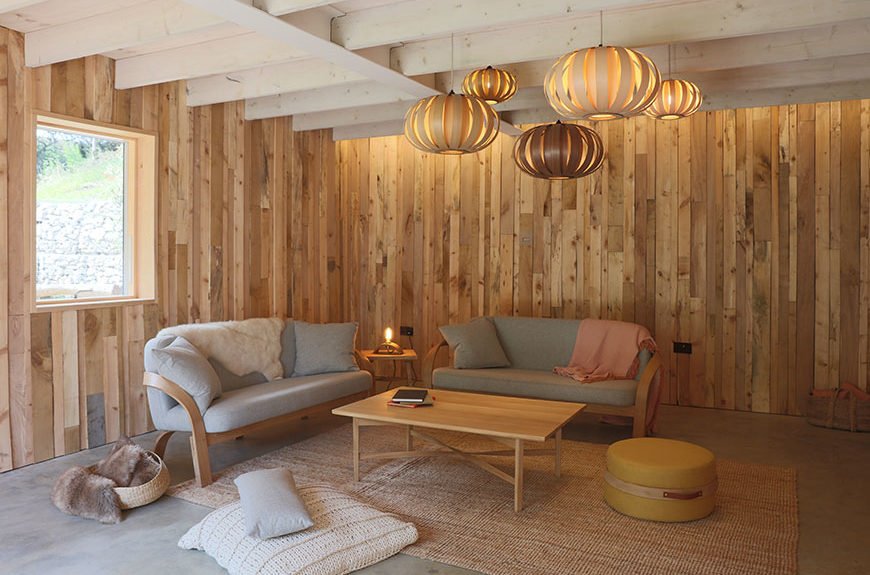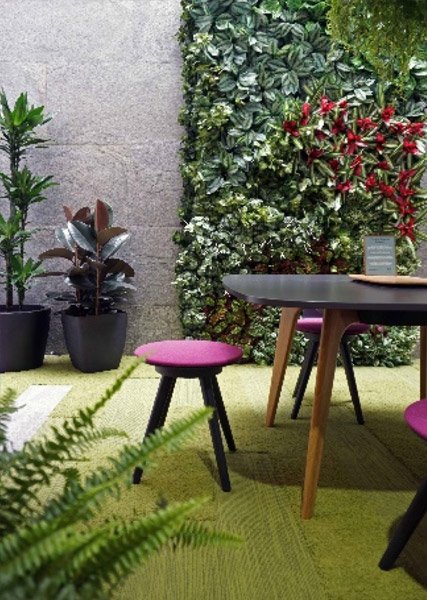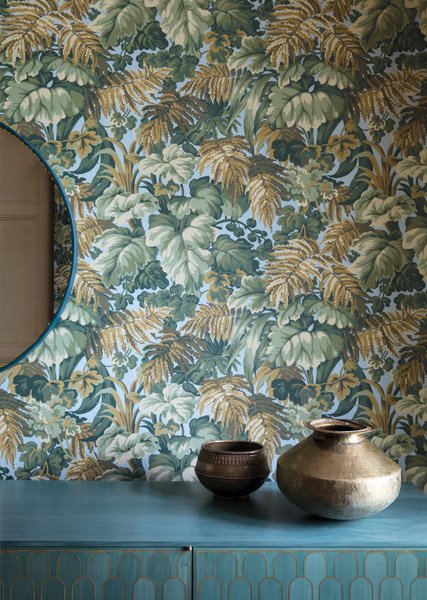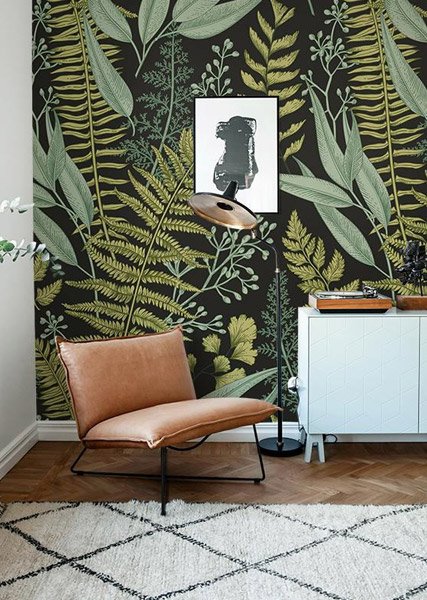Biophilic Design – What you need to know
A stunning house designed and lived in by Tom Raffield Ltd This home also features lots of his signature furniture and lighting.
Biophilic Design is the biggest news coming out for creating happier, healthier interiors, but what is it?
Have you ever noticed how your spirits are lifted when you are outside? Maybe it’s a walk on the beach or through the woods. At home you can get extraordinary pleasure from being in your own garden. Even your humble potted plants can bring you joy! This “feeling” is what makes the building blocks of “Biophilia”, a concept Edward O. Wilson introduced in 1984 which describes the relationship between humans and nature. But it’s not just about how we relate to nature; it is about how having contact with nature makes us happier.
The United Nations predicts that by 2030 60% of the world’s population will live in urban environments. Despite becoming a more urbanised civilization, it is as if our human instincts need a connection to our natural environment. Understanding that relationship between people and nature is becoming a huge deal in the world of Architecture and Interior Design. Designing Biophilic spaces is about giving that connection to the great outdoors back to people, by incorporating it or emulating it within the fabric of the design of buildings.
So how do you incorporate Biophilic Design into your Interiors?
I could talk about all the research until the cows come home but my question as a designer is how can I take that information and design better spaces for my lovely clients? We now spend 90% of our time indoors so we are stepping further and further away from the healing power of Mother Nature. There are a number of elements in design that can push our “Happy Nature Buttons” and I have tried to boil them down to 5 key elements.
Views
If you can’t be in nature, then looking at nature through your window is the next best thing. The physical benefits of admiring a beautiful natural view are lowered heart rate and stress levels. I often notice when visiting clients how they love being in the rooms with the big windows rolling onto their gardens, often spending little to no time in any other room in the house. Sadly, the opportunity of a beautiful view out of one of your windows is something that either you have, or you don’t as not every home is in a physical position to look over the rolling hills. The key is to make the most of what you do have! If you are renovating, add French doors, bi-fold door window seats, and keep curtains from covering your window. Open up that view so the outside flows right inside.
Natural Light
We all need daylight to thrive! Over the last few years we have identified that a number of people suffer from SAD (Seasonal Affective Disorder) so as the Winter months come in they suffer from depression caused by the lack of sunlight. Though we now acknowledge SAD as a mental health issue, we sometimes fail to see how we all need a dose of natural sunlight with added Vitamin D to thrive. One of the worst culprits is offices, who often cover windows to stop the sun glaring off computer screens, depriving their workers of contact with natural light. Shopping centres deliberately cut you off from contact with natural light so you lose all sense of time and shop ‘til you drop.
The answer to this comes down again to your windows to keep that light flooding through. Go as big as you can and keep window treatments from covering them up. To keep light to its max I often use glazed doors through the public areas of the home so that you can still close doors to retain heat and the feeling of security but at the same time light can flow from one space to the next.
Oliver Heath Studio design for Interface Showroom Installation – Photo Oliver Heath, second image Smartstyle Interiors for Habitat.
Plants
The craze for indoor plants might not just be a fad, it might just be the healing thing we have been looking for. Not only do they make us feel calmer and more relaxed, but they are shown in studies of office workers to raise creativity. All that as well as working hard to purify our air, making our homes better for our health. However before you think you are nailing it with a plastic potted plant, you’re not! Only the real thing will do in Biophilic Design as we need that connection to REAL nature to get all the benefits.
Oliver Heath Studio design for The Garden School, Hackney – Photo Oliver Heath
Natural Materials
When I first started reading about Biophilic Design and how we needed to be flooding our homes with gorgeous natural views, daylight and plants I thought “well that’s dandy but how about people in homes and work spaces that just don’t have access to these things? How do I, as an Interior Designer give them the benefits of Biophilic Design?” The answer came in the choice of materials we use in our designs and you guessed it, natural materials is the way to go. Not only is it about “looking” at a wooden table but it is also about our response to how it physically feels to touch it. Like the drive to remove the process from our food, it’s about stepping back to basics with your choice of finishes. If we can take it from the earth and make it with our hands then we want a connection to it.
Martyn Lawrence Bullard, Royal Fernery 113/3009, by Cole & Son. Botanical Wallpaper, Ferns Wallpaper, Wall Mural, Green Home Décor, Herbal Decorations, Easy instal Wall Decal, Removable Wallpaper B008 – Etsy
Fake It
Okay I know I just said NO to fake plants but this is slightly different. We can’t always have views of the sea but we can have a painting of the sea. Representations of nature in our art, wallpapers or fabrics can give us a certain amount of the relaxing benefits of the real deal. So that banana print wallpaper might not only be the design statement you want to make in the down stairs bathroom, but it can also meet the emotional benefits your human instinct needs from looking at lots of leafy foliage.
Oliver Heath Design for TV2’s Tid for Hjem in Norway Photograph by Jan Inge Mevold Skogheim.
Colours
The final stage to answer the question how I can create the benefits of Biophilic Design if I have little access to Mother Nature, comes in the choice of colours we use. Yet again we are looking to echo what is outside our home, inside our home with a colour palette that creates happy, productive and creative environments. Unsurprisingly the main colours that popped up were, darker greens, blues, browns, tans and tawny golds. Sadly the yellower greens were found to remind people of sick and dying plants which created a slightly higher stress response. As I have sadly recently lost one of my cacti, I know what they mean! Now you might be going “Oh those colours all sound quite dreary and I love bright colour”. Don’t panic! According to Human Spaces report “The Global Impact of Biophilic Design in the Workplace”:
“Humans are attuned to seeking out colours indicative of flowers and fruit. Therefore, a judicious use of bright colours will help liken a space to natural conditions and improved user preference.”
In other words, bright colours aren’t off limits, but I would use these as the “Accent” colours in a design scheme. Think dark green sofa with zingy red and orange cushions! Like succulent flowers on the lushest tree!
A Stunning house design and lived in by Tom Raffield Ltd which also feature His signature furniture and lighting.
The study of Biophilia is hot, hot, hot right now. As all the scientists learn more so will we designers. Interestingly there does seem to be a certain amount of correlation between the principles of Biophilic Design and Feng Shui. So, though we might be understanding the human drive to be near nature better than we have before it certainly isn’t an entirely new approach to designing happier homes.









